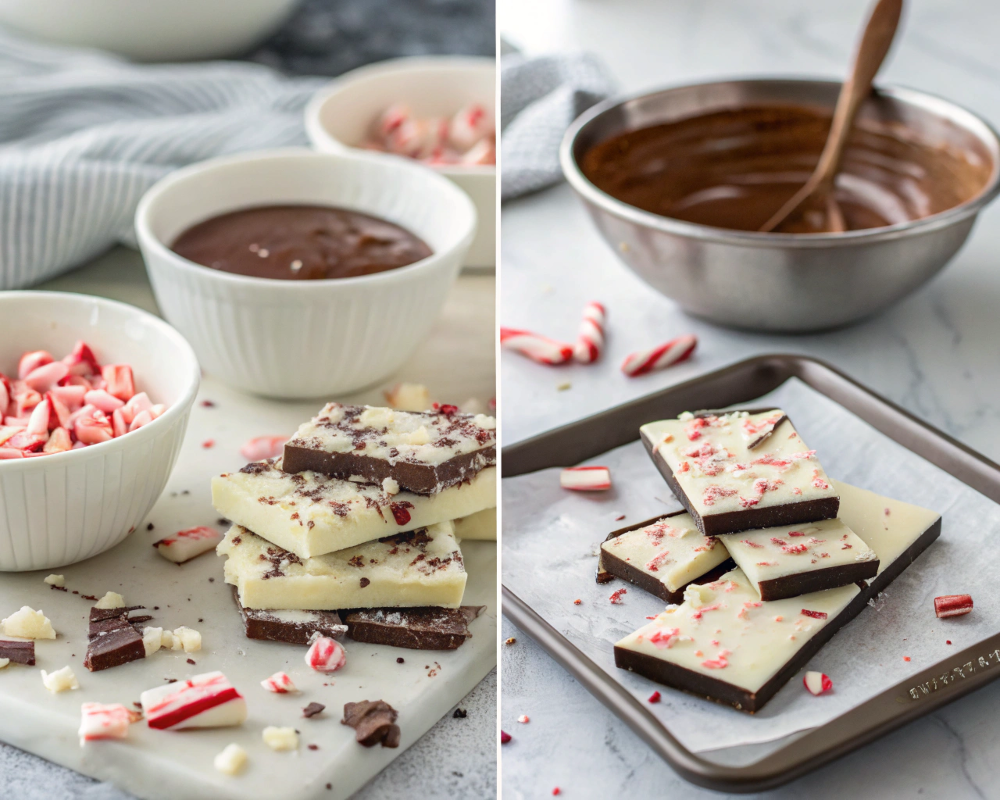Historical Roots of Peppermint and Its Cultural Significance
Peppermint has become an iconic flavor during the holiday season, evoking memories of candy canes and festive treats. Its journey from a medicinal herb to a symbol of Christmas highlights its importance in ancient traditions and religious symbolism. For those looking to incorporate this festive flavor in creative ways, explore these Christmas martini recipes for inspiration.
The Origins of Peppermint Use in Festive Traditions
Peppermint has long been valued for its refreshing aroma and medicinal properties, which made it a popular choice in ancient celebrations.
- Ancient Uses:
- People in Egypt and Greece used peppermint to aid digestion and ease respiratory issues.
- Ancient feasts often included peppermint for its pleasant aroma and flavor, adding a sense of refreshment to celebrations.
- Introduction to Christmas:
- During the Middle Ages, European desserts and beverages started featuring peppermint due to its cooling and sweet taste.
- Over time, peppermint became a favorite ingredient for winter festivities, especially in holiday recipes like candy canes.
The widespread use of peppermint during celebrations showcases its enduring appeal across different eras and cultures.
Early Religious Symbolism in Europe
In Europe, peppermint held symbolic meanings that contributed to its integration into Christmas traditions.
- Symbol of Purity:
- Many associated peppermint’s crisp and clean scent with purity and renewal, which matched the spiritual themes of Christmas.
- Religious practices often included herbs like peppermint to symbolize holy virtues during ceremonies.
- Connection to Candy Canes:
- A German choirmaster in the 17th century created the candy cane to resemble a shepherd’s crook, symbolizing the shepherds who visited Jesus at his birth.
- The red and white stripes, along with the peppermint flavor, represented Christ’s sacrifice and purity, blending symbolism with tradition.
The spiritual and cultural significance of peppermint helped establish its enduring role in holiday celebrations.
Peppermint’s rich history and cultural importance highlight its transformation into a beloved symbol of Christmas. Whether used in ancient remedies or modern treats, peppermint continues to evoke the joy and spirit of the festive season.
Peppermint in Christian Traditions
Peppermint holds a special place in Christian holiday traditions, particularly through its association with candy canes. These sweet treats not only delight during Christmas but also carry deep symbolic meanings that reflect faith and the spirit of the season.
The Legend of the Candy Cane
The candy cane is one of the most recognizable symbols of Christmas, with its distinct peppermint flavor and iconic shape.
- Historical Roots: The candy cane originated in 17th-century Germany. A choirmaster is said to have created it to keep children quiet during long nativity services.
- Shape and Meaning: Its hook shape resembles a shepherd’s crook, symbolizing the shepherds who visited baby Jesus. When turned upside down, it also forms the letter “J,” representing Jesus Christ.
- Peppermint Flavor: The cool and refreshing taste of peppermint was chosen for its association with purity and renewal, adding a deeper connection to the holiday’s spiritual themes.
The legend of the candy cane demonstrates how a simple treat can carry profound Christian symbolism.
Symbolism of Red and White Colors
The colors of the candy cane are not only festive but also rich in Christian symbolism.
- White Stripes: The white stripes signify purity, reflecting the sinless nature of Jesus and the spiritual cleansing offered through faith.
- Red Stripes: The red stripes symbolize Christ’s sacrifice and the blood He shed for humanity’s salvation. This profound meaning reminds believers of the true essence of Christmas.
- Combination of Colors: Together, the red and white stripes create a visual representation of the unity between Christ’s divinity and His humanity.
These symbolic colors add layers of meaning to the candy cane, making it more than just a holiday decoration or treat.
Peppermint’s role in Christian traditions, particularly through the candy cane, reflects the deeper spiritual messages of Christmas. From its shape to its colors, this beloved holiday treat serves as a reminder of faith, purity, and the significance of the season.
Peppermint as a Holiday Flavor
Peppermint has become one of the defining flavors of the holiday season. From its early uses in festive recipes to its current popularity in holiday confections, this refreshing and versatile ingredient has cemented its place as a Christmas favorite.
Evolution of Peppermint as a Christmas Treat
Peppermint’s association with Christmas evolved over centuries, blending culinary traditions and cultural influences.
- Early Beginnings: Peppermint’s use in festive recipes dates back to the Middle Ages, when its cooling and sweet flavor made it a popular addition to desserts and beverages during winter celebrations.
- Integration into Holiday Traditions: By the 19th century, peppermint began appearing in candies and baked goods, particularly in Europe and the United States. Its refreshing taste complemented the richness of traditional Christmas treats, making it a festive favorite.
- Modern Holiday Icon: Today, peppermint is synonymous with Christmas. It features prominently in candy canes, hot chocolate, cookies, and more, reflecting its enduring appeal in holiday traditions.
Peppermint’s transformation into a holiday staple highlights its versatility and timeless flavor.
Popular Peppermint Confections and Their Rise in Popularity
Peppermint-flavored confections have become staples of Christmas celebrations, beloved for their refreshing taste and festive charm.
- Candy Canes:
- The candy cane is the most iconic peppermint confection. Originally a simple white stick of sugar, it gained its characteristic red stripes and peppermint flavor in the early 20th century.
- Its widespread availability and association with Christmas traditions have made it a symbol of the season.
- Peppermint Bark:
- This layered treat combines white and dark chocolate with crushed candy canes, offering a blend of creamy sweetness and minty crunch.
- Peppermint bark rose to popularity in the late 20th century and is now a holiday favorite for gifting and snacking.
- Peppermint Hot Chocolate:
- Adding a splash of peppermint to hot chocolate creates a warming and festive drink. Its popularity has soared thanks to coffee shops and seasonal menus.
- Peppermint Cookies and Desserts:
- From peppermint brownies to sugar cookies topped with crushed candy canes, these confections blend the refreshing taste of mint with the sweetness of baked goods.
These confections have contributed to peppermint’s status as an essential holiday flavor, enjoyed in countless ways during the festive season.
Peppermint’s evolution as a holiday flavor and its presence in popular confections showcase its versatility and enduring appeal. Whether in candy canes, bark, or hot chocolate, peppermint continues to bring joy and festivity to Christmas celebrations.
The Science Behind Peppermint’s Festive Appeal
Peppermint’s popularity during the holidays goes beyond tradition. Its cooling sensation and uplifting aroma engage the senses, making it a perfect fit for the winter season. Scientifically, peppermint offers benefits that enhance its festive charm, making it an essential part of holiday celebrations.
Cooling Sensation and Its Connection to Winter
One of peppermint’s most distinctive characteristics is its refreshing cooling effect, which perfectly complements the chill of winter.
- Menthol’s Role:
- Menthol, a natural compound in peppermint, activates cold-sensitive receptors in the mouth and skin. This creates a cooling sensation, even when the temperature remains unchanged.
- By mimicking the crispness of winter air, peppermint naturally aligns with the season’s sensory experiences.
- Holiday Relevance:
- Peppermint’s cooling effect enhances the sweetness of candies, desserts, and beverages, balancing their flavors.
- It pairs exceptionally well with rich holiday treats like chocolate and spiced cakes, creating a refreshing contrast.
This unique sensory response ties peppermint to winter celebrations, making it a beloved seasonal flavor.
Aromatherapy Benefits During the Holidays
Peppermint’s aroma not only evokes festive memories but also provides tangible mental and physical benefits.
- Stress Relief:
- Research suggests that peppermint’s scent reduces stress and promotes relaxation. During the busy holiday season, this calming effect can be particularly valuable.
- Additionally, the invigorating aroma sharpens focus and increases energy levels, helping individuals tackle holiday tasks.
- Mood Enhancement:
- The bright and refreshing scent of peppermint boosts mood and fosters feelings of happiness. This makes it a perfect choice for creating a cheerful atmosphere.
- Many holiday decorations, candles, and essential oils feature peppermint, contributing to a festive ambiance.
- Health Benefits:
- Beyond mental well-being, peppermint’s scent relieves headaches, improves digestion, and clears nasal passages. These practical benefits make it a functional and enjoyable part of holiday traditions.
By combining these effects, peppermint provides both comfort and joy, enhancing the holiday experience.
Peppermint’s festive appeal stems from its scientific properties and sensory effects. Its cooling sensation connects it to the winter season, while its refreshing aroma uplifts the holiday spirit. Whether enjoyed in treats or incorporated into décor, peppermint continues to captivate as an essential part of Christmas celebrations.
Traditional Peppermint Recipes for Christmas
Peppermint is a beloved flavor of the holiday season, adding a refreshing twist to festive treats. From classic candy canes to decadent peppermint bark, these recipes have become staples of Christmas celebrations, bringing both joy and tradition to the table.
Candy Canes and Their Variations
Candy canes are perhaps the most iconic peppermint treat associated with Christmas. Their sweet, minty flavor and distinctive shape make them a festive favorite.
- Classic Candy Canes:
- Traditionally made from sugar and peppermint oil, candy canes have been a holiday staple since the 17th century.
- Their red and white stripes, along with their symbolic shepherd’s crook shape, connect them to both festive fun and Christian traditions.
- Modern Variations:
- Today, candy canes come in a variety of flavors, colors, and even shapes to suit different preferences.
- Mini candy canes are popular for decorating baked goods, while chocolate-dipped versions make for delightful treats.
Candy canes continue to be a versatile and enduring part of holiday celebrations.
Peppermint Bark and Other Sweets
Peppermint bark is a modern classic that combines the refreshing taste of peppermint with the richness of chocolate, making it a perfect holiday indulgence.
- Peppermint Bark:
- This layered treat features a base of dark or milk chocolate, a layer of white chocolate, and a topping of crushed candy canes.
- Easy to make at home, peppermint bark is also a popular gift item during the holidays.
- Other Peppermint Sweets:
- Peppermint Hot Chocolate: A warm and comforting drink enhanced with peppermint flavor, topped with whipped cream and crushed candy canes.
- Peppermint Cookies: Sugar cookies or chocolate cookies infused with peppermint extract and decorated with crushed candy canes.
- Peppermint Fudge: A creamy, mint-flavored confection that adds a refreshing twist to traditional fudge recipes.
These peppermint-inspired treats bring festive cheer to holiday gatherings, offering both simplicity and indulgence.
Traditional peppermint recipes like candy canes and peppermint bark capture the essence of Christmas. Whether enjoyed as gifts or part of your dessert spread, these timeless treats add flavor and festivity to the holiday season.

Modern Uses of Peppermint in Holiday Celebrations
Peppermint continues to bring joy to holiday celebrations with its versatility and festive charm. From refreshing beverages to aromatic decorations, it has become a key element in creating a memorable holiday atmosphere. Its ability to add flavor and fragrance makes it a favorite during the festive season.
Peppermint Cocktails and Beverages
Holiday drinks have embraced peppermint for its unique flavor and refreshing qualities, making it a popular addition to festive beverages.
- Peppermint Cocktails:
- A Peppermint Martini blends vodka, peppermint schnapps, and white crème de cacao for a creamy and indulgent holiday drink.
- The Candy Cane Mojito, featuring peppermint-infused syrup, adds a festive twist to the classic mojito, perfect for celebrations.
- Non-Alcoholic Beverages:
- Peppermint Hot Chocolate combines rich cocoa with a hint of peppermint, topped with whipped cream for a cozy and festive treat.
- A Peppermint Milkshake, made with vanilla ice cream, milk, and peppermint extract, offers a delightful dessert drink garnished with candy cane pieces.
These drinks not only taste great but also bring a touch of festive cheer to any gathering.
Peppermint-Scented Decorations
Peppermint’s invigorating scent enhances holiday decorations, adding both beauty and fragrance to festive spaces.
- Candles and Diffusers: Peppermint-scented candles and essential oil diffusers fill the air with a refreshing, cheerful aroma, perfect for the season.
- DIY Peppermint Décor: Homemade decorations like candy cane wreaths or peppermint-infused ornaments combine creativity with festive fragrance.
- Gift Wrapping: Using candy canes or peppermint-scented accents in gift wrapping adds a thoughtful and aromatic touch to presents.
These decorations create a sensory experience that complements the visual charm of the holidays.
Peppermint in Holiday Health Remedies
Peppermint has long been valued for its natural health benefits, making it an effective remedy for common winter ailments. Its soothing properties provide comfort and relief during the busy holiday season.
Traditional Remedies for Winter Ailments
Peppermint offers practical solutions for alleviating seasonal discomforts.
- Congestion Relief: Menthol, found in peppermint, clears nasal passages and improves breathing, acting as a natural decongestant.
- Digestive Aid: Peppermint eases indigestion and soothes upset stomachs, particularly after heavy holiday meals.
- Headache Relief: Applying diluted peppermint oil to the temples creates a cooling sensation that can relieve tension headaches.
These natural remedies help manage winter discomforts effectively and naturally.
Peppermint Tea and Its Soothing Properties
Peppermint tea combines health benefits with warmth and relaxation, making it a favorite during the holidays.
- Calming Effects: Its soothing aroma and flavor reduce stress, providing a calming moment amidst the holiday rush.
- Digestive Benefits: Sipping peppermint tea after meals helps alleviate bloating and supports healthy digestion.
- Cold Relief: The steam from peppermint tea can soothe sore throats and alleviate minor nasal congestion.
This comforting beverage is both delicious and beneficial, making it an essential part of holiday wellness routines.
Peppermint’s versatility makes it a standout element in modern holiday celebrations and health practices. From delicious drinks and fragrant decorations to soothing remedies, peppermint continues to play a vital role in spreading holiday cheer and comfort.

FAQs About Peppermint Associated With Christmas
How did peppermint become a global holiday flavor?
Peppermint gained popularity through its use in candy canes and festive recipes, symbolizing winter’s freshness and holiday cheer.
Are there alternatives to peppermint in holiday celebrations?
Yes, flavors like cinnamon, ginger, and nutmeg are also popular for creating a festive atmosphere.
How can I make homemade peppermint Christmas treats?
You can create treats like peppermint bark, cookies, or hot chocolate using peppermint extract and crushed candy canes.
Conclusion
Peppermint’s versatility makes it a cherished part of modern holiday celebrations. From festive drinks and aromatic decorations to soothing remedies, it brings joy, comfort, and seasonal charm to the holidays. By incorporating peppermint into your celebrations, you can enhance the festive spirit while enjoying its unique flavor and health benefits.

